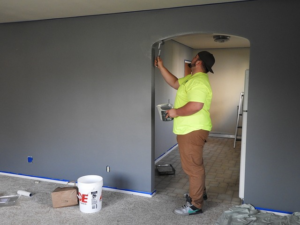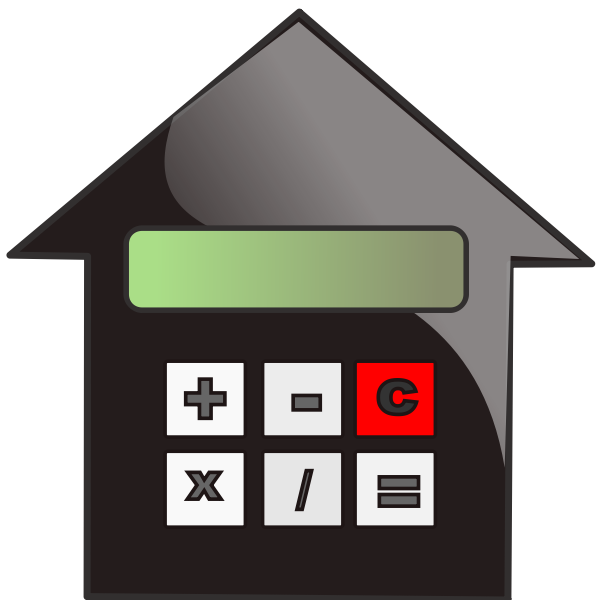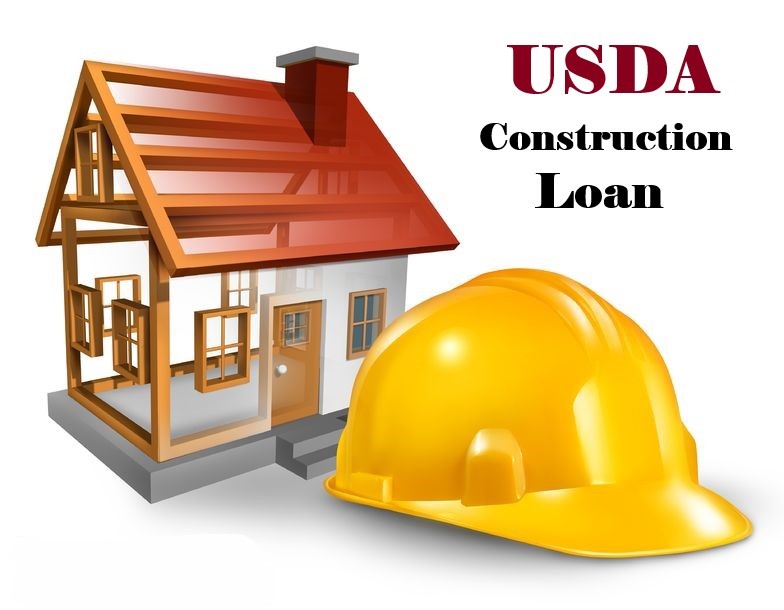
If you’re looking to build your dream home from scratch, you can consider getting USDA construction loan. The USDA one-time close construction loan allows you to borrow enough money for your lot purchase, home construction, and permanent mortgage. Those who are getting new construction can get the USDA OTC construction loan for complete financing and a single closing. In this guide, we take a closer look at USDA construction loan.
Buy land and build a home with a USDA construction loan

With a USDA construction loans, you can buy land, build a home, and also get a permanent mortgage. Although the USDA construction loan does not allow you to buy land on its own, you can buy one for your home construction. The single-closing loan programs offers you financing for purchasing a lot, home construction, and permanent mortgage in one loan.
The USDA construction loan is suited for borrowers who want to build their first house, and it offers all the benefits of a single closing. You can build site-built, modular, and manufactured homes with the USDA construction loan.
How Does A USDA Construction Loan Work?
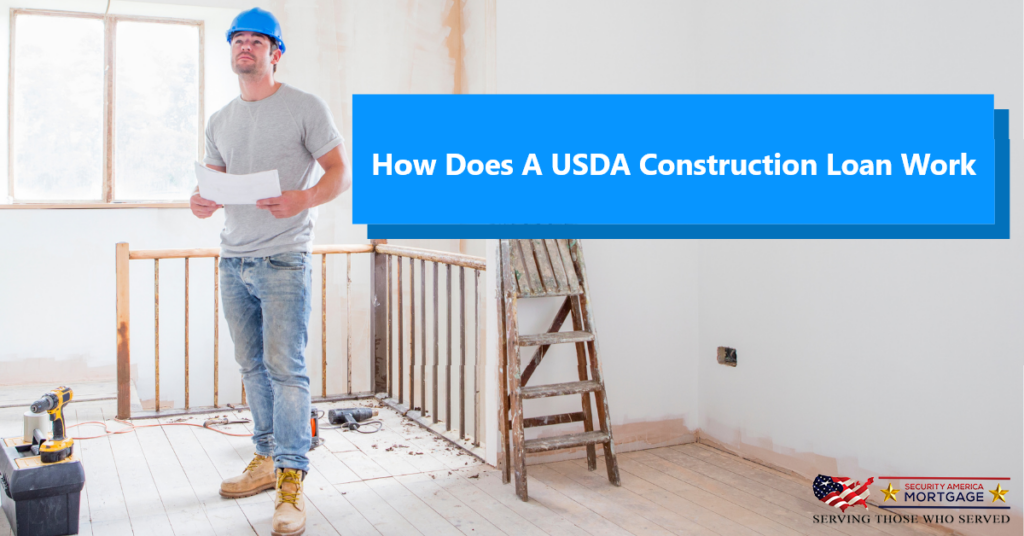
A USDA construction loans work by the financing process for homebuyers simpler, and you don’t have to get the construction loan and permanent mortgage separately. The loan is provided by the United States Department of Agriculture, and you can work with reliable USDA lenders to receive the loan.
The loan provides up to 100% maximum loan-to-value ratio, but this means you might not have to pay a down payment. It also comes with a 30-year fully amortizing fixed term. With the construction to permanent loan, the closing happens before the construction starts. There are no payments due during the construction phase.
The closing costs can be financed, and once your home construction is complete, there is no requalification required. Since it’s a one-time close construction loan, the single closing reduces the closing costs and saves time. If you want to get a USDA construction loan, you should apply
Traditional Construction Loan VS. Conventional, FHA, Portfolio, Or VA One-Time Close Construction Loans
One-time construction loans like the USDA, conventional, FHA, or VA loans are different from traditional construction loans. With a traditional loan, you would first receive a loan for the lot and the home construction. After the first closing, you can get a second closing for the permanent mortgage under the standard USDA loan.
But with a one-time close construction loan, you receive the financing for the lot purchase, construction, and permanent mortgage combined into one loan. There is only one closing required, and the interest rate is fixed after closing. It will not increase during the construction process.
Can you buy land with a USDA construction loan?
You can buy land with the USDA construction loan, but only if you are going to use the land to build a new home under the loan. If you receive the USDA OTC construction loan, you can buy land but will have to use it for your new home. But, if you already own a piece of land, your loan amount will only be for construction and mortgage insurance.
The Pros Of A USDA Construction Loan
There are different benefits to getting a USDA construction loan. You can look out for these pros if you want to receive an OTC construction loan backed by the USDA.
Single Closing
A USDA construction loan offers a single closing, so borrowers can get money for buying land, building their home, and the permanent mortgage at once. With one closing, you can pay closing costs once and also save time.
No Requalifying
After the construction process is complete, borrowers don’t have to requalify or apply for a permanent mortgage. The permanent USDA loan will be closed before construction starts.
Low Down Payment
With an LTV ratio of 100%, you can get a down payment of as low as 0% with the USDA OTC loan. The maximum ratio is 100%, so borrowers might not have to make a down payment.
Fixed Interest Rates
Another pro is the fixed interest rate, which reduces the amount you have to pay back. The permanent mortgage is closed before construction starts, so it will not change during the construction phase or even after that.
The Cons Of USDA Construction Loan
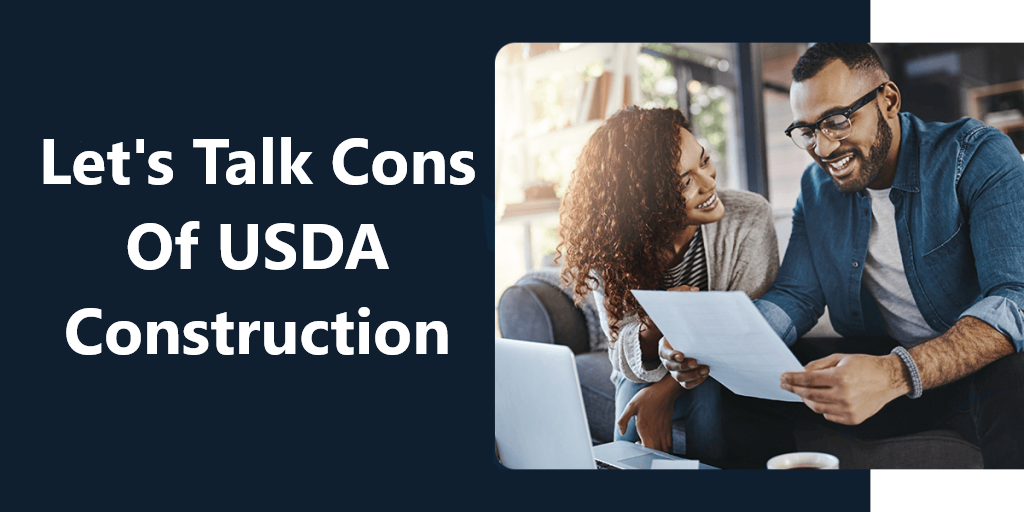
The main downside of a USDA construction loan is the fact that they are not provided by most lenders. Some borrowers might find it hard to find a USDA construction loan lender, so it’s important to look closely before you start applying.
Also, USDA construction loans have higher interest rates than other loan products like VA OTC or Conventional OTC. The only upside is that the interest rate remains the same throughout the construction process and even after.
USDA Construction Loan Requirements
There are specific eligibility requirements that you need to meet when getting a USDA one-time close construction loan. The loan product is available to borrowers who meet the USDA construction loan requirements, starting with a minimum credit score of 640.
The borrower must have contracted a licensed general contractor and should currently own their land or purchase the land at closing. The maximum loan amount provided differs based on your location.
After the USDA loan is closed, the borrower will receive funds to cover the purchase of the land. The rest of the funds will be kept in an escrow account and disbursed as needed during construction. The permanent mortgage must be amortized after 60 days from the issuance of the Certificate of Occupancy or the final inspection.
Contractor Requirements for USDA Loans
To be eligible for a USDA construction loan, you need to work with a licensed general contractor. The contractor needs to pass a background check and must have a satisfactory credit history. They also need a minimum of $500,000 in commercial liability insurance and must have 2 years of experience in building homes. It’s important to do the necessary research before picking a USDA approved contractor.
Property Requirements for USDA Loans
The properties that you can build with the USDA construction loan include the site-built, modular, and manufactured homes. You can also build PUDs with the USDA loan. But, you cannot buy an existing manufactured home or build condominium, 2, 3, and 4-unit homes, and niche homes like log homes, storage container homes, or bamboo homes.
USDA Home Loan
USDA Home Loans are backed by the US Department of Agriculture. Since USDA Loans are insured by the government and are for the purpose of improving home ownership in rural areas no down payment is required. USDA Rural Development loans are a good for most borrowers looking to purchase a home outside of major metropolitan areas.
In order to qualify for a USDA Rural Development Loan your income must be not exceed 115% of the media income limit set by the USDA for your county and family size. The USDA Loan requires that the property by located in a rural area. Most towns with a population less than 20,000 are eligible. A credit score of 620 or greater is required to obtain a USDA Home Loan. USDA backed mortgages are for owner occupied properties only.
USDA Home Loans require no down payment
A USDA Home Loan must be used to purchase a primary residence in a rural area. usda home loans USDA Loans require a 3.5% Guarantee Fee that can be rolled into the loan up to 102% of the appraised value of the property. USDA home loans A USDA Loan restricts its use to borrowers that earn less than 115% of the median income for the county. USDA home loans USDA Loans require a minimum credit score of 620 to obtain financing. usda home loans Our goal at Security America Mortgage is to match the best product to the needs of our clients. In addition to offering VA Home Loans, we offer USDA Home Loans. Contact us today to discuss your loan options and determine which loan is best for you!
Get approved to buy a home.
If you want to receive the USDA single close construction loans, you need to get preapproved by a bank or a credit union. This will show that you meet the income and credit guidelines. Then, you need to secure a general contractor and a lender. The lender must approve the contractor, and then you can start selecting a site for the land and home.
The contractor will submit a project application in terms of cost to the lender, who will then review it. Aside from the standard costs, there would be a construction contingency in case there are unforeseen changes during construction.
Once the project application is approved, the USDA loan program will be closed, and the borrower will provide the down payment and handle the closing costs. Construction would start, and once it has finished, the borrower can move into the new home without requiring a mortgage.
What do USDA construction loans cover?
The USDA construction loan covers the lot purchase, construction, and permanent mortgage of your new home. If you want to build a home with a less-than-perfect credit score, you want the security that the fixed interest rate offers and you don’t have enough money for the down payment, you can use the USDA construction loan.
Choose a USDA-approved construction loan lender.
It’s important to look closely for a reliable USDA-approved construction loan lender if you want to apply for the loan. You should carry out research on the type of loan that they provide and also read their online reviews to ensure they provide a reliable customer experience. The loan lender should also be approved by the USDA and offer USDA construction loans.
Check Your Construction Loan Options: Alternative Home Construction And Renovation Loans
When considering a loan, you need to check the options available to you. There are different kinds of one-time close construction loans that you can apply for, but it depends on which one you qualify for. Before you settle for the USDA construction loan, you should consider other alternatives like the Fannie Mae HomeReady loan, which allows low to moderate-income borrowers to build a home for a down payment as low as 3 percent. If you’re a veteran or active military member, you can also get a VA OTC construction loan. It’s best to get one-time close loan program rather than getting separate loans.


